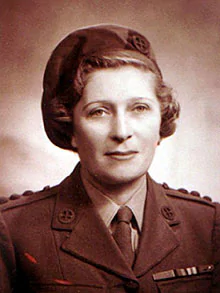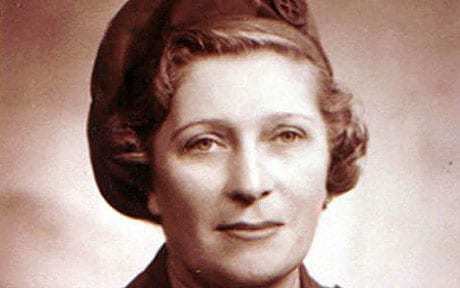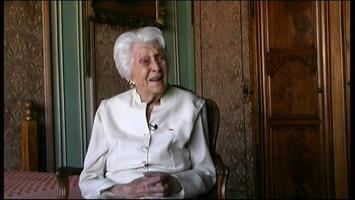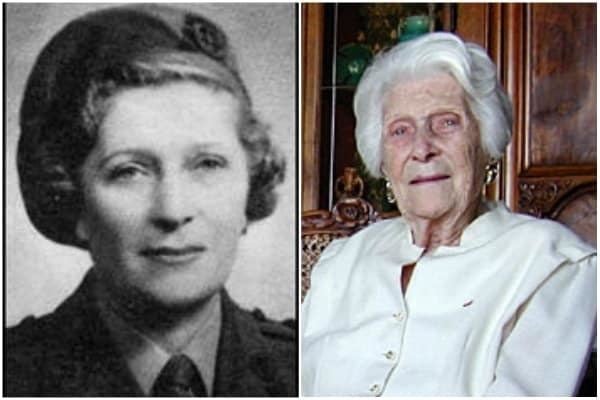Siblings Claude de Baissac | Name Lise Baissac | |
 | ||
Nickname(s) Agent Scientist, Odile, Irene, Marguerite, Adele Born 11 May 1905Mauritius ( 1905-05-11 ) Service/branch | ||
Years of service 1942–1944 (SOE/FANY) Allegiance United Kingdom, France | ||
Lise de Baissac was one of the first female SOE agents to be dropped into France.
Lise Marie Jeanette de Baissac MBE (11 May 1905 – 28 March 2004) was born in Mauritius of French descent and British nationality. She was a heroine of the Special Operations Executive during the Second World War, a special agent who risked her life running her own operations; she was awarded several gallantry awards after the war.
Contents
- Lise de Baissac was one of the first female SOE agents to be dropped into France
- Early life
- Escape to Britain
- Special Operations Executive
- First mission
- Second mission
- Post war
- Recognition
- Related cultural works
- References

Early life

The third of three children, Lise was born to a French family in Mauritius, but was a British subject as all Mauritians then were. Her parents taught her and her siblings French from an early age and they moved to Paris in 1919.
Escape to Britain

In 1940, Paris was occupied by the Germans. Her eldest brother, Jean de Baissac, joined the British Army. Lise and her other brother, Claude, travelled to the South of France in an attempt to reach England. She obtained help with travel arrangements to England from the American Consulate and crossed into Spain and went to Lisbon, where she waited for five months for permission to travel to Gibraltar and on to the UK. The ship docked in Scotland and she made her way to London where she made contact with Lady Kemsley, who helped her get a job at the Daily Sketch. Her brother, Claude, was recruited by the Special Operations Executive (SOE).
Special Operations Executive

As soon as the SOE began recruiting women, Lise applied to join. She was interviewed by Selwyn Jepson, and was speedily accepted for training, however not as a courier or a wireless operator but to set up her own small circuit.
Her training took place at Beaulieu, Hampshire, where she trained with the second group of women recruited by the SOE including Mary Herbert, Odette Sansom and Jacqueline Nearne. She was commissioned in the First Aid Nursing Yeomanry in July 1942. The commandant at Beaulieu wrote that De Baissac was "quite imperturbable and would remain cool and collected in any situation... [s]he was very much ahead of her fellow students".
First mission
On 24 September 1942, she and Andrée Borrel were the first female SOE agents to be parachuted into France. (Yvonne Rudellat had arrived by boat two months earlier.) On the eve of her departure, she was taken for dinner by Colonel Maurice Buckmaster and seen off from RAF Tempsford in a Whitley bomber. Borrell was the first to drop, with de Baissac following in quick succession, landing in the village of Boisrenard near the town of Mer. Their mission was to establish a safe house in Poitiers where new agents could be settled into the secret life.
Lise's role was to be a courier and liaison officer on the SCIENTIST network, communicating with the Prosper – PHYSICIAN network under Francis Suttill and the BRICKLAYER network under France Antelme, with the mission "to form a new circuit and to provide a centre where agents could go with complete security for material help and information on local details" and to organise the pick-up of arms drops from the UK to assist the French resistance. She was effectively reproducing in Poitiers what Virginia Hall had created in Lyons. Lise used a number of code names (including "Odile", "Irene", "Marguerite" and "Adele"). Her cover story was that she was a poor widow from Paris, Madame Irene Brisse, seeking refuge from the tension of life in the capital and to avoid the food shortages of the capital. She moved into an apartment on a busy street near the Gestapo HQ, and became acquainted with the Gestapo chief, Herr Grabowski.
She also used the role of an amateur archaeologist looking for rock specimens to bicycle around the Loire countryside to reconnoitre possible parachute drop-zones and landing areas for RAF 138 and 161 squadrons. Having no radio to send and receive messages, she had to travel to Paris or Bordeaux; the latter location being where her brother Claude de Baissac was developing the SCIENTIST network, organising sabotage missions and gathering information on ship and submarine movements. In June 1943, the Prosper – PHYSICIAN network collapsed and ARTIST was also penetrated by the Gestapo, and so on the night of 16/17 August Lise, Claude and Major Nicholas Bodington, were flown back to England by Lysander. Lise was then sent to RAF Ringway where she was conducting officer to two new agents, Yvonne Baseden and Violette Szabo. While she was assisting them with their training, Lise de Baissac broke her leg.
Second mission
Once her leg healed, she returned to France (dropped by Lysander near Villers-les-Ormes on the night of 9/10 April 1944) to work for the PIMENTO network, headed by Anthony Brooks, under the new codename Marguerite. Shortly after Lise's arrival, two French schoolgirls of the PIMENTO network helped cripple eighty-two tank carriers of the Das Reich, Deutschland, and Der Führer divisions around Montauban.
She rejoined her brother Claude, who had been dropped in February 1944 and made his way to Normandy to reconnoitre possible large areas which airborne troops could hold for 48 hours while they got themselves established. After the D-Day, she gathered information on German dispositions and passed it to the Allies, even renting a room in a house occupied by the local commander of the German Forces.
According to Lise, on one occasion, "the Germans arrived and threw me out of my room. I arrived to take my clothes and found they had opened up the parachute I had made into a sleeping bag and were sitting on it. Fortunately they had no idea what it was." She continued her activities until the liberation, organising several groups and providing the Allied forces with information. When the US troops arrived to liberate the area, she was wearing her First Aid Nursing Yeomanry (FANY) uniform, which she had kept hidden in France.
Post-war
After the war she married Gustave Villameur, an interior decorator living in Marseille; they had no children. She died, aged 98, in 2004.
In 2008, her life was recaptured in the highly fictionalised French film Female Agents (Les Femmes de l'ombre).
